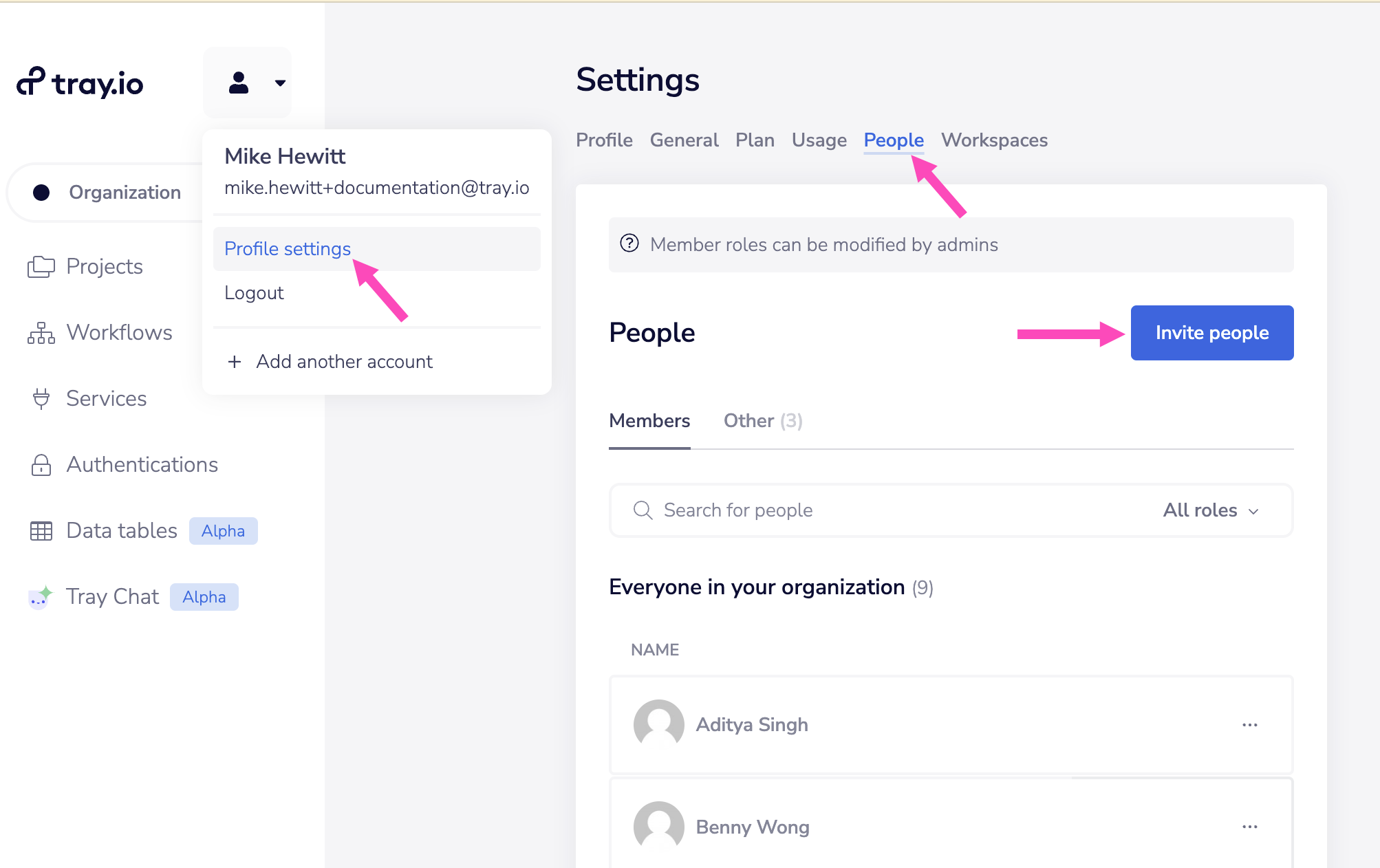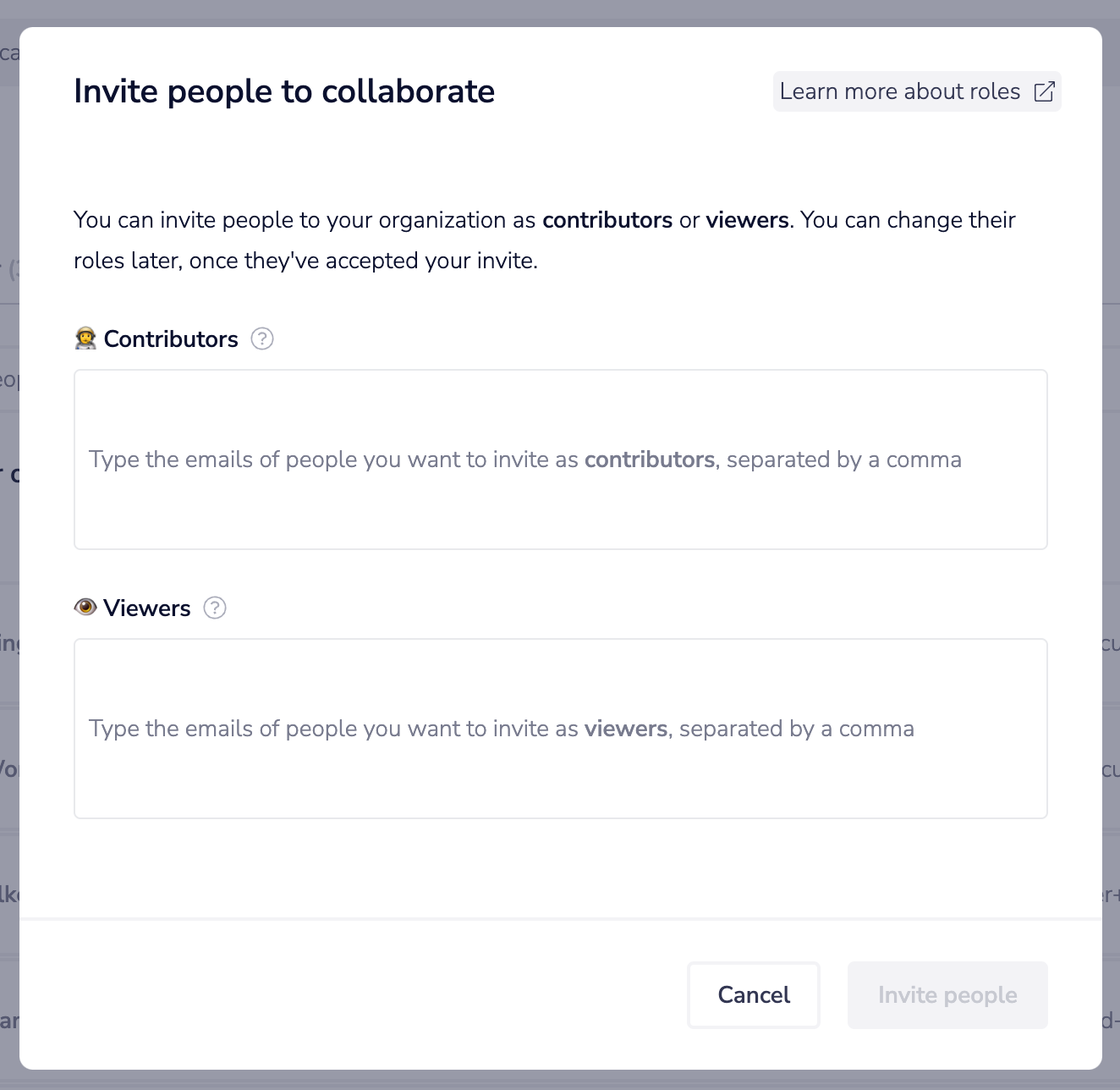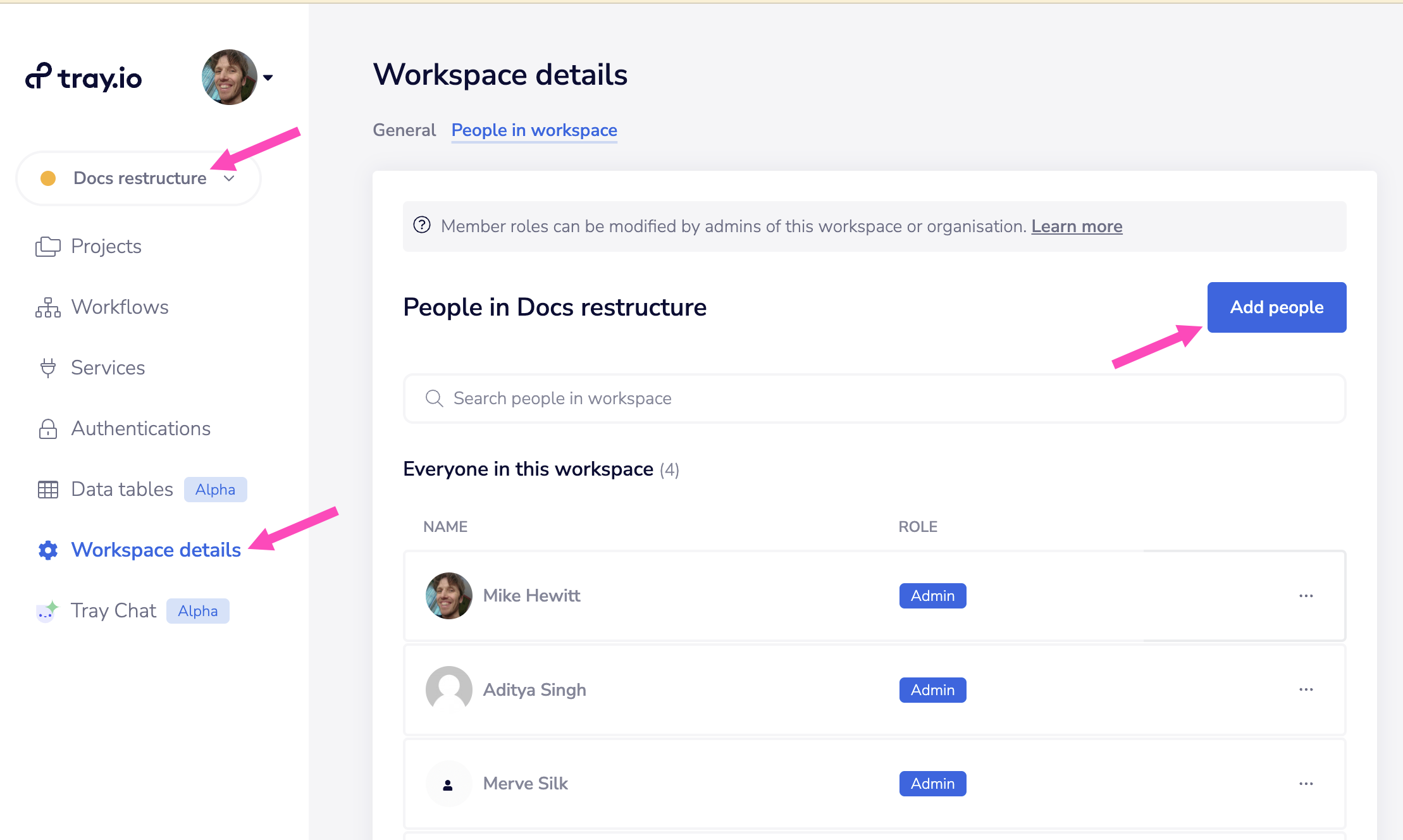User management and RBAC
Adding new users to your Org
Navigate to 'Profile settings' and click on 'Invite people':

Make sure you have your new member's email address and use a , to separate multiple invites if there is more than one.
Notice that their access level will depend on the box you enter them in (Contributor vs Viewer):

Adding users to workspaces
In order to invite pre-existing users to a workspace, make sure you are in the correct workspace and click on 'Workspace settings' and 'People in workspace':

Use the search bar to find someone within your organization you want to add. Click Add people to add them to the workspace:

Assigning roles to users
ADD CONTENT
Deleting users
Users can be deleted from a workspace, such as your Org, via the 'People & Settings' section of the dashboard.
When a user is deleted on your end, that user is "soft-deleted" for 30 days.
During the 30-day soft-deletion period, the workflows and authentications owned by the deleted user will continue to function and are still viewable and usable by admins and the owner.
You can access these workflows from the "People & Services" section of the dashboard.
Personal authentications and personal workflows owned by this user will be permanently deleted after the 30 days elapse, at which point they will be non-functional and unrecoverable.
Any auths or workflows on the organization level will not be deleted.
One thing to note is if the third-party account associated with an auth was also owned by the deleted user, the auth will fail when that third-party account becomes deprecated.
Before the 30 days elapse, we advise that your team replace the deleted user's personal authentications on any enabled workflow. You will need to replace those authentications with an equivalent authentication that exists either on (a) the organization level or (b) lives in another active user's personal account.
You also should move any of the deleted user's personal workflows that you want to keep to the organization level.
If a user has custom services in their account, it may not be possible to delete that user. You should move the services to another account, such as the owner if needed.
For example, if you have several trial accounts and want to add that user to the main one you plan to use, you should contact support. Deleting users from another account for this purpose can cause issues.
Role-Based Access Control (RBAC)
Available user roles in Tray
| Role | Description |
|---|---|
| Owner | The owner of the Organization account One per organization |
| Admin | Has the most privilege on all assets |
| Contributor | |
| View Only |
Settings management
Available org settings in Tray
| Setting | Details |
|---|---|
| People | Add / Edit / Delete users and their auths |
| Workspaces | Create / Edit / Delete and add people to workspaces |
| General | |
| Plan / Billing | |
| Usage | Monitor task usage and troubleshoot problem workflows |
| Tokens** | Create master tokens for API access |
| Embedded settings** | Specify Embedded ID etc. See Integration prerequisites |
| Customization** | Specify custom CSS for the Config Wizard |
** Embedded only
Org settings RBAC matrix
| Role | Setting | |||||||
|---|---|---|---|---|---|---|---|---|
| People | Workspaces | General | Usage / billing | Insights | Tokens | Embedded Settings | Customization | |
| Owner | CRUD | CRUD | RU | R | R | CRD | RU | RU |
| Admin | CRUD | CRUD | RU | R | R | CRD | RU | RU |
| Contributor | R | C/R* | -- | -- | -- | -- | -- | -- |
| Viewer | R | R | -- | -- | -- | -- | -- | -- |
Asset management
Available assets in Tray
| Asset | Description |
|---|---|
| Workflows | |
| Projects | |
| Solutions** | |
| Custom services | |
| Authentications | |
| Logs |
** Embedded only
Assets RBAC matrix
| Role | Assets | ||
|---|---|---|---|
| Manage Projects/Workflows/Solutions | Manage Services | Manage Authentications | |
| Owner | CRUD | CRUD | CRUD |
| Admin | CRUD | CRUD | CRUD |
| Contributor | CRUD | CRUD | CRUD |
| Viewer | R | -- | R |